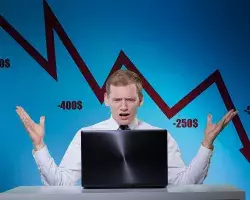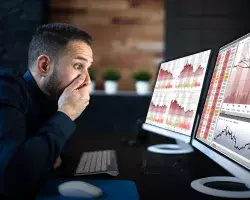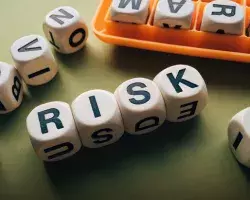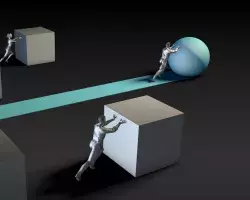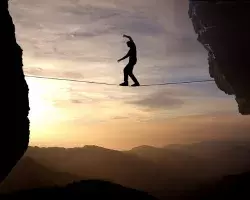Impulsive Trading: Recognizing and Overcoming This Costly Habit
Have you ever clicked “Buy” or “Sell” without a second thought, only to regret it moments later? You’re not alone. Impulsive trading is a common pitfall that affects traders at all levels, often leading to costly mistakes. According to recent studies, a significant percentage of traders experience impulse-driven trades, which can drastically impact their portfolios.
The Dangers of Holding Onto Losing Positions: Why Letting Go Can Save Your Portfolio
Holding onto a losing position is a common mistake that can severely impact your portfolio. Many traders, influenced by loss aversion - a tendency to avoid losses at any cost - hope for a market turnaround instead of cutting their losses. This mindset not only increases losses but also limits future opportunities. Understanding the risks of holding losing trades is essential for maintaining a disciplined and successful trading approach.
Chasing Losses: The Dangerous Trap Every Trader Should Avoid
Chasing losses is one of the most common psychological traps traders fall into, especially after experiencing a string of losing trades. In an attempt to recover lost funds, traders often find themselves acting impulsively, making trades that go against their strategy, risk management rules, and market analysis. This cycle of trying to “get back to even” can quickly escalate into even greater losses, putting both short-term gains and long-term success at serious risk.
Effective Ways to Assess and Control Risk Exposure in Your Portfolio
Are you aware that nearly 80% of new traders face significant losses within their first few months of trading? One of the primary reasons is inadequate risk management. This statistic underscores the critical importance of understanding and managing risk exposure in trading. Risk exposure refers to the potential losses that a trader may face due to changes in the market, and it’s a core concept in trading risk management. Whether you’re trading stocks, forex, or commodities, understanding your risk exposure can make the difference between consistent growth and substantial losses.
Chasing Losses: The Dangerous Game of Trying to Recover Quickly in Trading
Have you ever found yourself desperately trying to win back what you’ve lost in a trade? It’s a scenario many traders know all too well. The adrenaline kicks in, and suddenly, the focus shifts from strategic decision-making to an almost reckless pursuit of breaking even. According to studies, nearly 80% of traders succumb to the temptation of chasing losses after a losing trade. This behavior, driven by the emotional reaction to loss, can quickly spiral into a dangerous cycle of bad decisions and mounting financial setbacks.
Top Trading Strategies Based on Volatility: Mastering Forex Volatility Strategies
In the fast-paced world of trading, having a well-structured strategy is essential for successfully navigating market fluctuations. A trading strategy is a carefully designed plan that helps traders make informed decisions and execute trades efficiently. These strategies are typically built around various key factors such as market behavior, economic data, and technical indicators. Among the most influential elements shaping trading decisions is volatility.
Ignoring Risk Management: The Fastest Way to Lose Your Investment | Essential Strategies for Success
Imagine losing half of your hard-earned investment overnight. Sounds like a nightmare, right? This scenario isn’t far-fetched; it’s a reality that countless investors face due to inadequate risk management. A study by the CFA Institute revealed that 85% of investment losses could have been mitigated with proper risk management strategies. This statistic underscores the paramount importance of understanding and implementing effective risk management.
The Slippage Dilemma: Navigating Smooth Trading in Forex Markets
Forex trading, a bustling global marketplace for currency exchange, has seen a surge in popularity in recent years. Its allure lies in its accessibility and the potential for substantial returns, attracting a diverse array of traders, from individuals to large financial institutions. Yet, amid the excitement of this dynamic environment, lurks a concept every trader should be well-versed in: slippage.
Mastering Break-Even in Forex Trading: Strategies for Success
In the dynamic world of forex trading, where fortunes can be made or lost in the blink of an eye, understanding the concept of break-even is crucial for traders seeking long-term success. Break-even serves as a pivotal point where the profits and losses of a trade balance out, allowing traders to mitigate risk and preserve capital. In this article, we'll delve into the intricacies of break-even in forex trading, exploring its definition, significance, and practical applications.
Balancing Risk and Reward: Unveiling the Power of Trailing Stop Loss in Financial Markets
Navigating the intricate landscape of financial markets, where assets fluctuate in value, demands adept risk management strategies. For those unacquainted with trading, the endeavor involves buying and selling financial instruments like stocks, cryptocurrencies, or forex. In this dynamic realm, the significance of risk management cannot be overstated. It's akin to choreographing a delicate dance between potential gains and potential losses.

